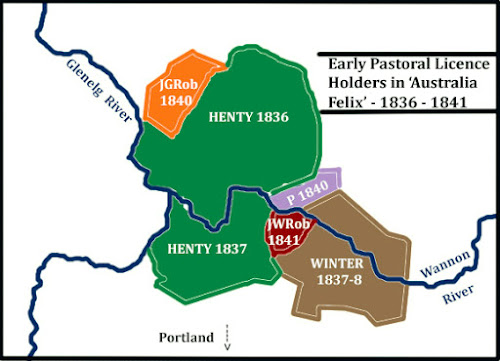Dubious Selections

In 1891, a decade after John Robertson's death, his Struan legacy was described in a government summary as an "estate". Totaling 74,162 acres, it was spread over 4 Hundreds in the County of Robe: 21,277 acres in Robertson, 38,803 acres in Joanna, 9,201 acres in Jessie, and 4,871 acres in Comaum. [LG MacGillivray, 1982, 'Land and People: European Land Settlement in the South East of South Australia, 1840-1940', PhD thesis, University of Adelaide, Appendix 8] The significance of this figure lies in more than just its size. Struan was certainly large. But the acreage accumulated by Robertson also reveals a plan. His was a methodical, disciplined approach to acquiring freehold title, maintained over 3 decades. Of an initial 89,827 acres occupied under Pastoral Lease No. 169 in 1851 (Struan) and an additional run of 23,680 acres taken over in about 1858 (Wrattonbully), approximately 65% had been converted from leasehold to freehold by 1880. Crown Land, bought from th

